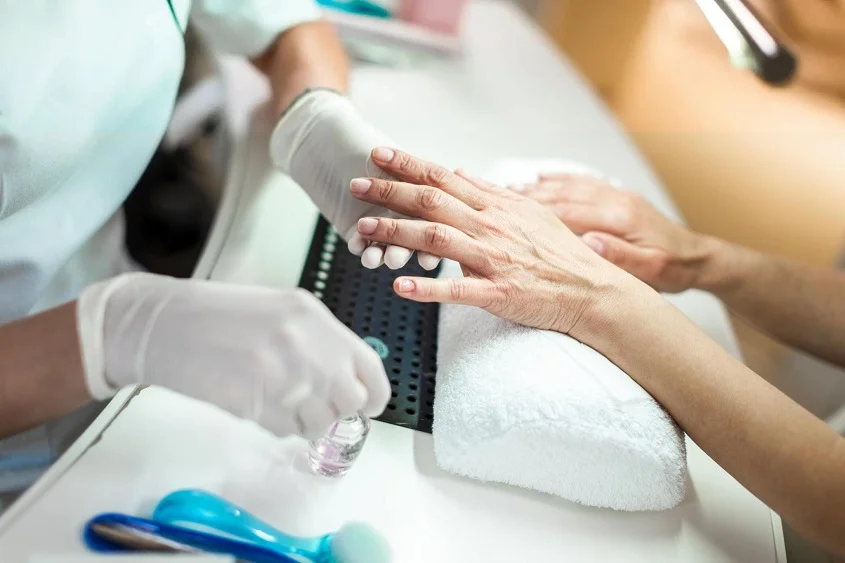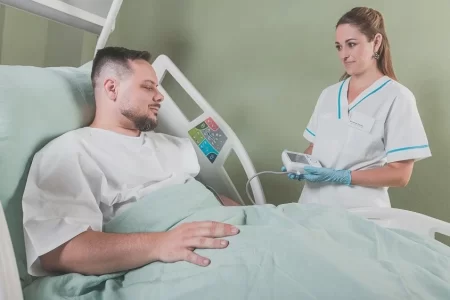DiseaseFix’s every article is examined by board-certified medical professionals to ensure that details on conditions, symptoms, treatments, and protocols comply with current guidelines and recent research. Our content is also written, verified, and approved by a team of experienced writers, editors, clinicians, and other experts.
Can Essential Oils Treat Varicose Veins?
- Updated on: Mar 23, 2024
- 4 min Read

Aging, pregnancy, or sitting for long periods of time can cause varicose veins or spider veins. They are also often passed down from family members. In addition to medical treatments, essential oils may prove useful in treating varicose veins at home.

A varicose vein is a large vein in the leg that appears larger than normal. They are blue, red, or flesh-colored veins that are raised and often twisted. Itching, swelling, and aching may occur in these veins from time to time.
There are several studies suggesting that grape vine, lavender, or yarrow essential oils can go some way to shrinking varicose veins or spider veins. This area needs further research, however.
However, it is important to use caution and seek the advice of a healthcare professional prior to using any natural oil for varicose veins, as they may not have significant benefits and are prone to causing irritation and allergic reactions. A healthcare provider should be consulted for any recommendations on lifestyle changes or medical treatment for varicose veins.
An analysis of the best essential oils and their scientific evidence is presented in this article. Additionally, we examine varicose vein causes, prevention, and ways to reduce them.
What are the Causes of Varicose veins?
It is the veins’ job to return blood that lacks oxygen back to the heart. Throughout the veins, tiny valves prevent blood from flowing backwards.
The valves, however, can become weak or damaged, causing blood to flow backward and pool. Varicose veins can result.
Due to their role in returning blood to the heart, leg veins are most likely to develop varicose veins.
A person is more likely to develop varicose veins if they have several risk factors. A few of these are:
- In older people, vein valves weaken as they age
- Families with varicose veins have a genetic history
- As the uterus grows, the veins are put under more pressure
- Having an overweight condition
- Long periods of sitting
- Face varicose veins are primarily caused by sun exposure
Varicose veins usually do not pose a major concern, but they are sometimes irritating and painful. In some cases, poor blood flow in the legs can cause sores or skin ulcers.
Varicose veins: Essential oils to try
Essential oils are extracted from plants, such as flowers, herbs, and trees. Alternative therapies often make use of these oils. Before using essential oils, a person should speak with a doctor about the dosages and instructions.
Varicose veins, characterized by leg swelling, can be treated with essential oils, including:
Grape vine
People with varicose veins may experience relief from swelling in their legs caused by grapevine essential oil.
Taking 360-720 milligrams of red grape vine extract a day reduced swelling of the lower legs as a result of low blood flow through the veins, a condition resulting in varicose veins, according to a study published in the Journal of the German Society of Dermatology.
Yarrow
In traditional medicine, yarrow essential oils are used for the treatment of varicose veins. People with varicose veins may find relief from their symptoms if they apply yarrow to their skin.
Lavender
Enhanced brain chemicals, such as serotonin and GABA, are believed to relieve pain when lavender is smelt, according to Evidence-Based Complementary and Alternative Medicine.
When massaged on the feet or other affected areas, lavender may reduce pain and the size of skin ulcers.
Horse chestnut
There are several ways of preparing horse chestnut seed extract (HCSE), including topical gels, oral tinctures, and tablets. Swelling, pain, and itching may be reduced by using it.
HCSE topical applications were shown to reduce symptoms of varicose veins, including leg swelling, leg pain, itching, and heaviness, in an article published in Advances in Therapy.
It is unclear exactly how HCSE works, but it might prevent the breakdown of capillaries.
Sea pine
Researchers have found that sea pine essential oil reduces swelling, or edema, in the legs.
Studies from 2018 show that maritime pine oil, also known as sea pine bark essential oil, is anti-inflammatory.
In addition, sea pine bark oil reduced edema related to chronic venous insufficiency, one of the causes of varicose veins, more effectively than horse chestnut extract. Research is needed, however, because only 40 people were tested in this study.
Using essential oils to treat varicose veins
A variety of ways can be used topically to treat varicose veins according to the West Coast Institute of Aromatherapy:
- Put 5 drops of essential oils and 1 liter of water in a cloth and soak for 5 minutes. 15 minutes should be spent applying the compress to the affected area. Elevate your legs while applying.
- Approximately 3 tablespoons of carrier oil should be combined with up to 30 drops of essential oil. There are several types of carrier oils that are popular, such as sweet almond oil, olive oil, coconut oil, or jojoba oil. It is also possible to add the oils to cocoa butter or shea butter. Massaging the affected area in a heart-directed direction with the mixture is recommended.
- The essential oil should be diluted in a small amount of carrier oil with up to eight drops. Warm the bathwater and add the mixture.
- The sitz bath can be enhanced with up to eight drops of diluted essential oils for the relief of hemorrhoids (varicose veins of the anus).
For calming and pain relief, use essential oils as follows:
- Use an inhaler tube or directly inhale from the bottle.
- Use a cotton pad or handkerchief to apply, and inhale.
- Using a diffuser, diffuse the air in the room.
Conclusion
You should learn the proper use of essential oils before adding them to your varicose vein treatment arsenal if you are new to them. Aromatherapists can help you determine which oils might help your situation.
To improve blood flow and reduce pressure on your veins, you can do the following at home and at work:
- To prevent constipation, increase your fiber intake.
- Get your legs moving by walking as much as possible.
- Using a timer, you can be reminded to move every hour. Do five minutes of walking, jumping jacks, or jogging.
- You should change positions frequently if you must sit or stand for long periods of time at your job. While sitting, stretch your calves and walk in place while standing.
- Sit without crossing your legs.
- Your calf muscles will be toned and blood will not pool if you wear low heels.
- Reduce salt intake to prevent swelling caused by water retention.












